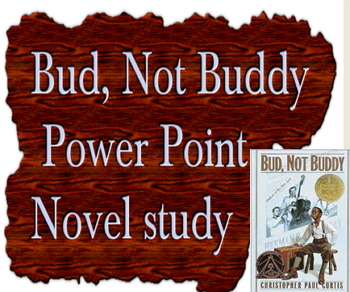Bud, not Buddy, 101 slides on a .PDF
- Zip
Description
Save some time and paper with this illustrated 101 slide .PDF on the Curtis novel Bud, Not Buddy. Each chapter has comprehension (with answers on the following slide) and journaling/discussion questions for review or informal assessment.
Many slides contain pictures (including photos from the Great Depression) that will deepen students understanding of the setting and graphic organizers for included projects.
Includes active links to interactive review games that can be played on a Smartboard or other projection cart, an author activity and other online resources for extension activities. Questions and writing prompts can be given by displaying the slide, which saves teachers time and paper.
Bonus material included: Curtain Call Caper reading comprehension passages and graphic organizers (available as a separate free download)
Check out other novel studies and products
Gregor the Overlander by Suzanne Collins
The Lion, the Witch and the Wardrobe by C. S. Lewis
Hazardous Duty Freebie novel study
Parts of Speech 14 bingo games - in person and remote versions
22 spooky, scary reader's theater scripts and monologues from Literature
Bundle of ELA bingo games (remote and in person)


